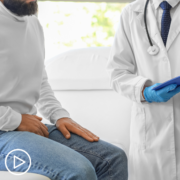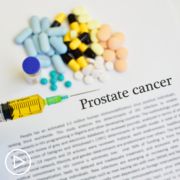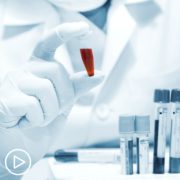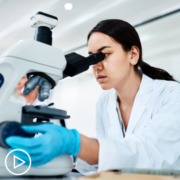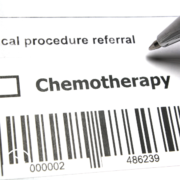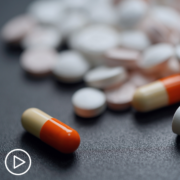How Is Renal Medullary Carcinoma Diagnosed?
How Is Renal Medullary Carcinoma Diagnosed? from Patient Empowerment Network on Vimeo.
Renal medullary carcinoma (RMC) diagnosis involves testing that patients may need to follow up on. Expert Dr. Nizar Tannir explains common RMC symptoms, typical imaging tests that are involved, and advice to patients to be proactive to ensure their best care.
Dr. Nizar Tannir is a Professor in the Department of Genitourinary Medical Oncology, Division of Cancer Medicine at The University of Texas MD Anderson Cancer Center.
[ACT]IVATION TIP
“…follow up after they have that imaging study…I would like patients to be aware and to be informed of what the symptoms mean. And that warning that blood in the urine or pain needs to be followed up and should not be dismissed or assumed that this is an infection or a stone that passed and you’re young, you don’t have to worry about cancer. They need to really follow up if that facility, that physician did not order the test, they need to follow up with their personal family physician and obtain those tests.“
Download Guide | Descargar Guía
Related Resources:
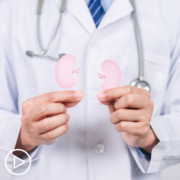
What Are the Challenges of Diagnosing Renal Medullary Carcinoma? |
Transcript:
Cora:
Given how rare RMC is, we know many people have a long road to diagnosis, like my brother Herman, which can cause tremendous stress. How is renal medullary carcinoma diagnosed?
Dr. Tannir:
Renal medullary carcinoma is diagnosed by imaging. Symptoms typically include pain, blood in the urine, and, of course, if the cancer has spread to organs, cough, fever, weight loss…so the diagnosis is made by imaging first. And typically this is done at a facility, hospital, clinic or emergency room, with an ultrasound or a CAT scan or an MRI, which typically shows a mass in one of the kidneys. Renal medullary carcinoma arises more commonly in the right kidney than the left kidney and three-quarters of the time it arises in the right kidney. So, but it can arise in the left kidney. So once there is a mass in the kidney, that obviously needs to lead to a biopsy.
And ultimately the diagnosis of RMC is made by obtaining a piece of that tumor, whether it’s from the mass in one of the two kidneys or a biopsy of a site that the cancer has spread to. So my activation tip is for a patient who has these symptoms and they seek medical advice at a hospital or a clinic or emergency room, is to follow up after they have that imaging study. Occasionally the facility may report the findings on the CAT scan, let’s say, but patients may not get that report; and, unfortunately, this may not be followed later with a phone call to the patient or family to alert them about the findings. So they need to…
Patients need to be proactive and participate in their care by getting the report, by finding out, by following up what showed up on the CAT scan or ultrasound or MRI, and then follow up further with a facility that is specialist in this type of disease. So my activation tip is be involved, be engaged, be proactive, follow up after you had a test. And if you..if the patient goes to a facility and they just get dismissed without doing the test, because unfortunately I’ve seen it in my practice time and again, where a patient goes to a facility complaining of blood in the urine or pain, and they’re treated with antibiotics and they’re told that they have an infection and the patient doesn’t follow up and they haven’t done an imaging study, a CAT scan or an MRI or ultrasound.
So I think it is important, I would like patients to be aware and to be informed of what the symptoms mean. And that warning that blood in the urine or pain needs to be followed up and should not be dismissed or assumed that this is an infection or a stone that passed and you’re young, you don’t have to worry about cancer. They need to really follow up if that facility, that physician did not order the test, they need to follow up with their personal family physician and obtain those tests. So that’s really my activation tip for patients.



